making apple cider vinegar
we have an apple tree in the garden with lots of nice apples. so @hindavi decided to make apple pies and applesauce. since there were lots of scraps i decided to use some of them to make a batch of apple cider vinegar.

this pot full of apple scraps is enough for more than 4 l / 1 gallon. since we still have some from last year i am only making 2 liters. there are almost now worms in the apples this year which makes the process more enjoyable.
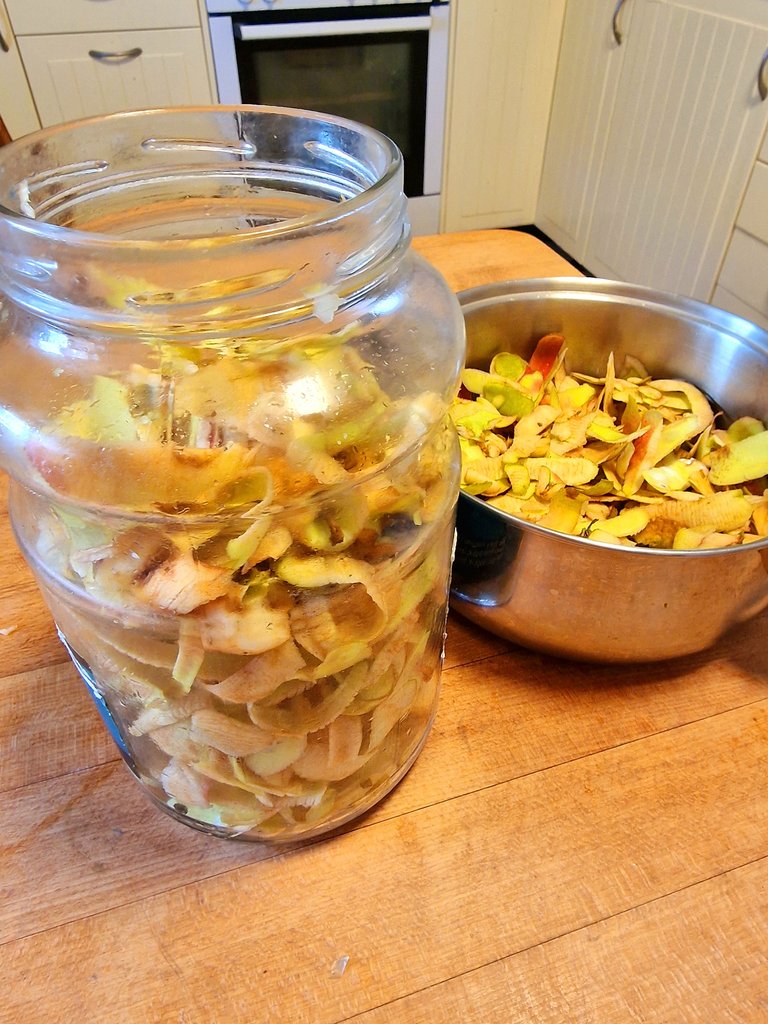
so i use about half the scraps and compost the rest. organic apple cores, seeds, peels are all good. brown spots are fine, they help speed up the fermentation. i filled a 3 l jar about 2/3 full of the apples. not more

then dissolved 2 tbsp organic sugar in warm water. when dissolved i added it to a pot altogether 2 liters. do not be tempted to leave out the sugar or use other sweeteners. since there are traces of chlorine in our water i just fill the pot a day in advance to let it dissipate. the more chlorine in the water, the more important it is to remove it either by filter, boiling or like i do.

then filled the jar with the sugar water
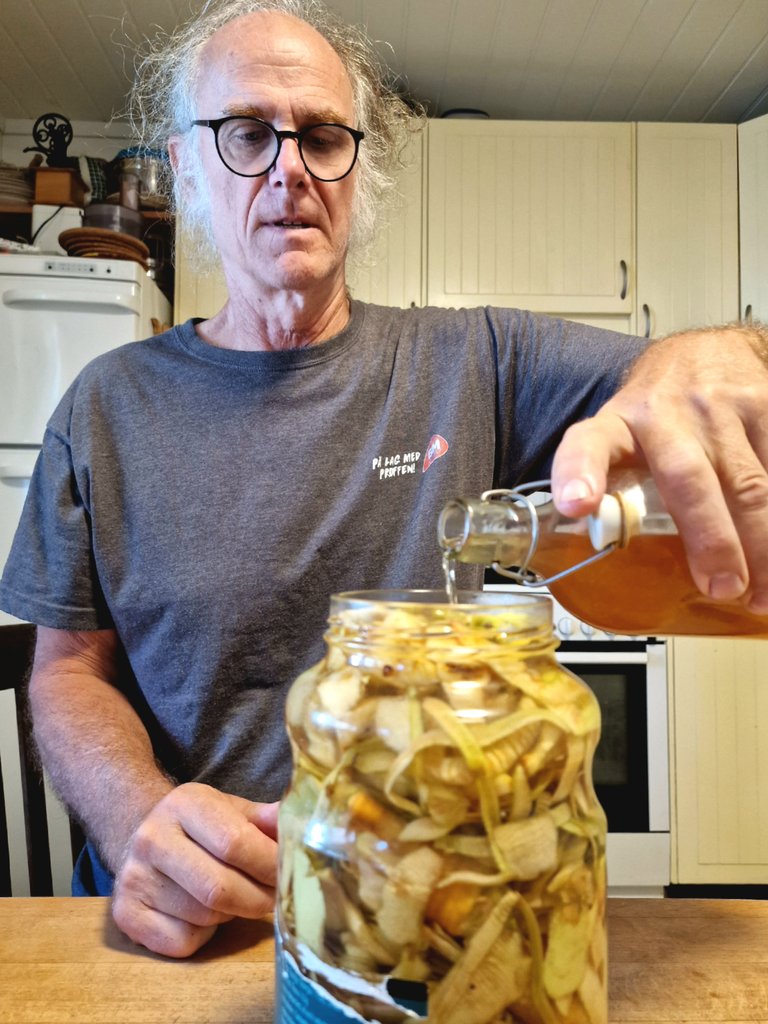
then poured 2-3 Tbsp active apple cider vinegar from last year. this speeds up the fermenting. if you don't have any it's ok but will take longer. the vinegar must be active with no preservatives.
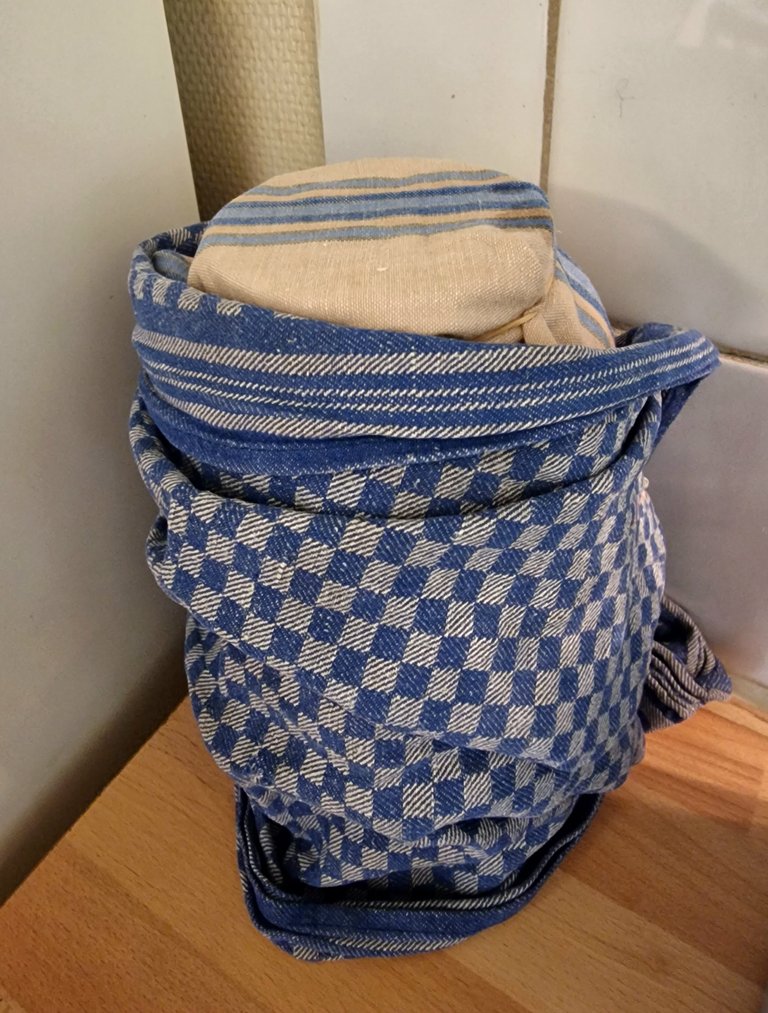
after a good stir i covered the jar with two layers of cloth to keep the fruit flies out. then wrapped the whole jar with a kitchen towel to keep it dark. and placed it beside the refrigerator which gives off a little heat. if you are in a warmer climate just keep it room tempeture.

within a couple of days the fermentation is underway. it is a good idea to stir it every couple of days because the apples float to the top and those exposed to air turn brown. also if there is any sugar that settled to the bottom it should be stirred enough to dissolve it. this fermentation should go on for at least two weeks. maybe more if there were no brown spots on the apples or you didn't add vinegar to start.
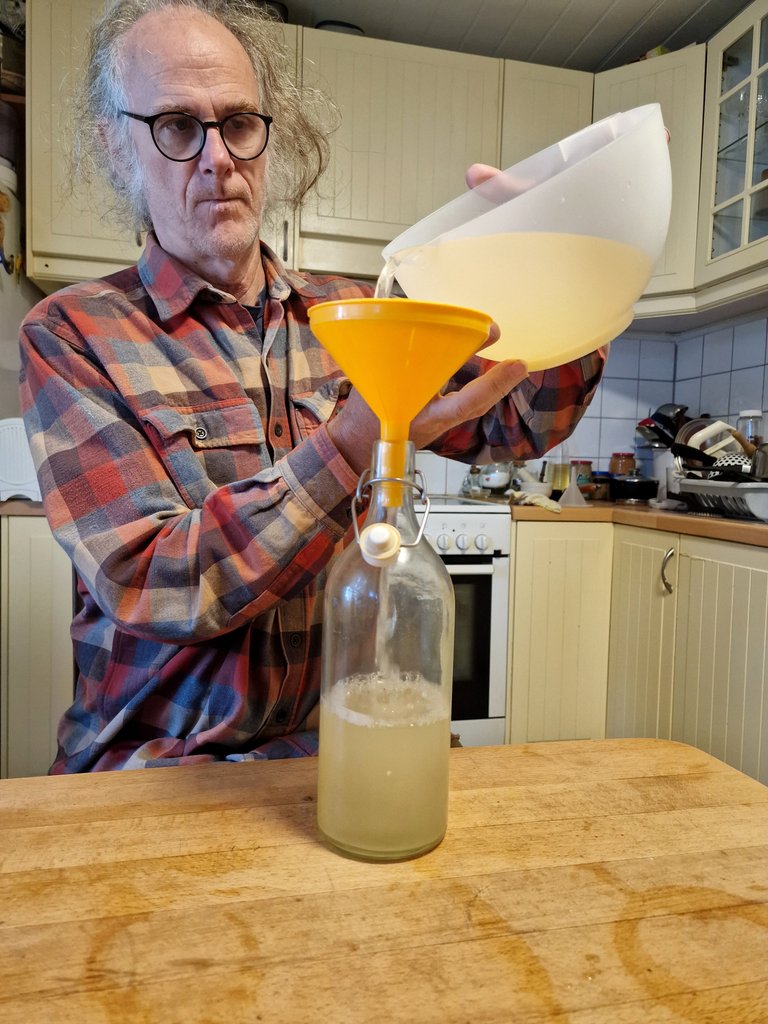
then it is time to remove the apple scraps (no photo) using a strainer but of course saving the liquid. pour the partially fermented cloudy liquid into bottles for finishing.
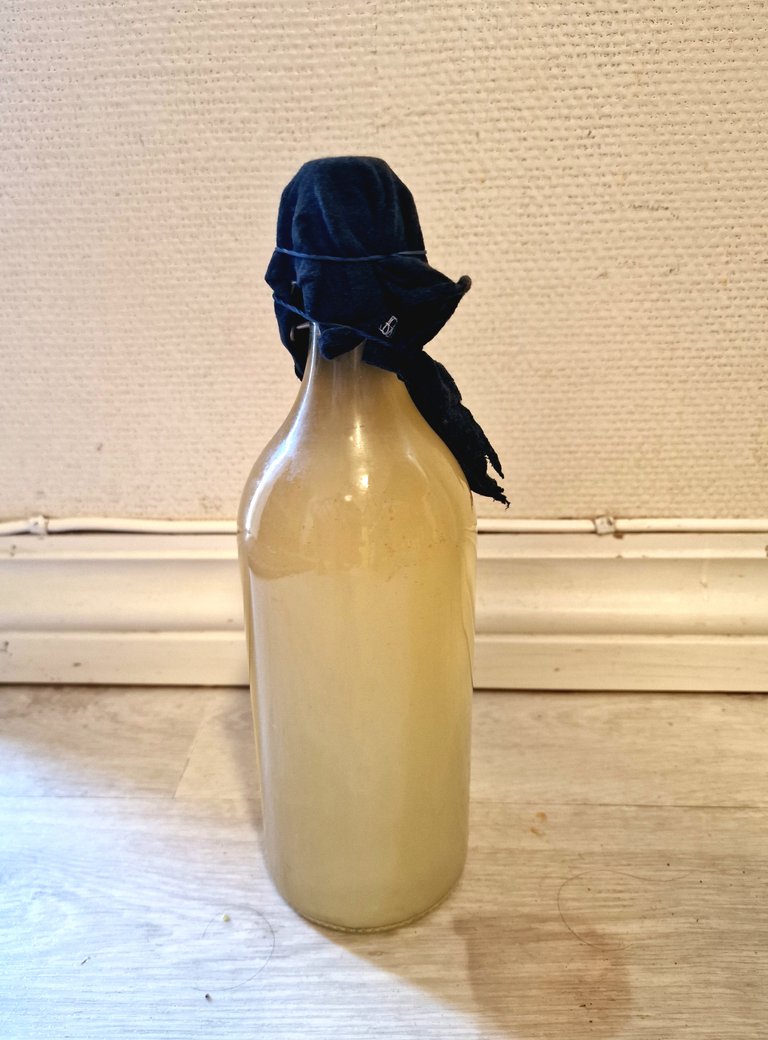
the first ferment has yielded a mix of alcohol and vinegar. the finishing fermentation will convert the alcohol into vinegar. it will take a couple of months or more. the bottles need to be loosely covered. i put the lid on but don't seal it. then i cover it with a small piece of cloth held in place with a rubber band. i store these bottles in the cabinet over the stove so the stay warm. i will taste test them in the beginning of december and when they are ready i will seal them properly. they keep for several years.
the benefits of this amazing stuff are too numerous to go into here. do a little research. and now that you know how easy it is there is no excuse to delay making your own.
I love how you and @hindavi use every bit of the apples! Never thought to make home made apple cider vinegar...
Does the type of apple used make a difference? I see the peels you used were green. Were these the tarte variety? Granny Smith is what we call them. My parents had two green apple trees in our yard when I was younger. The blackbirds always started pecking on the apples prematurely. I remember my mom toiling in the kitchen and canning homemade applesauce during the hot summer time. I was her sidekick apple peeler!🍏🔪🍏
Here in the States, Bragg's brand is the popular and most effective ACV I have yet to come across. Aquiring the ability to drink ACV mixed with water takes time (or use of a good clothespin on one's nose while swallowing it down!) Losing weight and otherr r health benefits are incentives of its own.
Terrific photos and step by step #DIY instructions! @eolianpariah2
!PIZZA
!LADY
!LUV
@eolianpariah2, @ninahaskin(1/3) sent LUV. | connect | community | HiveWiki | NFT | <>< daily
! help(no space) to get help on Hive. InfoView or trade
LOHtokens.@ninahaskin, you successfully shared 0.1000 LOH with @eolianpariah2 and you earned 0.1000 LOH as tips. (2/9 calls)
Use !LADY command to share LOH! More details available in this post.
thanks for the encouraging reply. the apples here are gravenstein. the apples are 'pied' lol meaning they are a mix of red and green and somewhat 'tart' which is probably a plus. i would not try with apples like yellow delicious or red delicious but pretty much any other variety.
i have never tasted braggs and there are different degrees of concentration depending on the apples to water ratio. the stuff i make is not overly potent so an undiluted spoonful slides down with little fuss and a pleasant enough aftertaste.
i forgot the DIY tag. i have never posted in that community but maybe i should.
!LUV
@ninahaskin, @eolianpariah2(1/1) sent LUV. | connect | community | HiveWiki | NFT | <>< daily
! help(no space) to get help on Hive. Info$PIZZA slices delivered:
@eolianpariah2(1/5) tipped @aguamiel
ninahaskin tipped eolianpariah2
It's wonderful that you have an apple tree in your garden, that's great! Where I live there are no apples. It's so hot the trees would die, so I always have a hard time getting them.
They have recently started selling apple cider vinegar in my town (industrially produced), and I have become familiar with the product, and I really like it a lot, because it is useful not only in the kitchen (for both sweet and savory dishes), but also for Personal hygiene, cleaning the house and clothes, is a wonderful and versatile product. So I love seeing the making process, which is really simple.
Beautiful post.
Greetings Mr. Paul.
i would guess there are local fruits that can be used to make vinegar. of course each fruit has different qualities but it is basically the sugar, both the natural sugars in the fruit and the added that ferment into vinegar. i have only used apples and pears but making red wine vinegar should be the same general process. that has many of the same beneficial properties as apple cider vinegar
I think I'll try to make some vinegar with acerola or semerucos. The plants are already flowering again, and the bees are doing their job, so at the end of October or beginning of November, I will have fresh fruit again. Thanks for the suggestion @eolianpariah2
You've been curated by @amazingdrinks! Delegations welcome!
thanks for the curation. i almost posted this as an amazing drink but decided against it becuse the taste for it is definitely an acquired one and it is not exactly a drink in the normal sense of the word.
You've been curated by @plantpoweronhive! Delegations welcome!
plants rock
Greetings @eolianpariah2, an excellent idea to take advantage of apple shells, I have used apple vinegar on several occasions and it is very good, in my country the hot climate does not allow harvesting apples, we must buy the vinegar in commercial establishments; thanks for sharing the elaboration of this useful ingredient in the kitchen.
Happy weekend!
greetings. i would guess there are local fruits that can be used to make vinegar. of course each fruit has different qualities but it is basically the sugar, both the natural sugars in the fruit and the added that ferment into vinegar. i have only used apples and pears but making red wine vinegar should be the same general process. that has many of the same beneficial properties as apple cider vinegar
Having a fruit tree is a blessing... from nature "nothing is lost everything is transformed" and multiplied for the benefit of our health.
I consume apple cider vinegar daily and I know its benefits, now I will prepare it with enthusiasm and I will tell you how I did in the process.
Thank you
oh that's great. let me know how it goes
!PIZZA
This must be very rewarding. I don't think I would have the patience for this but I also don't have an apple tree.
Thanks for sharing.
it's not much work at all but it does take time
Like I said "patience".😊